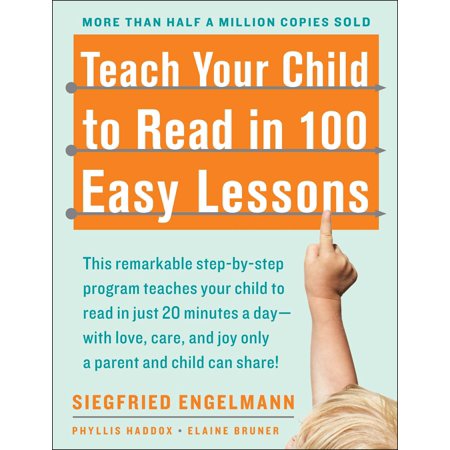The Best $20 I Ever Spent for Homeschooling: Teach Your Child to Read in 100 Easy Lessons
/{This post contains affiliate links. I may receive compensation for purchases
you make through my links. More info Here.}
In spite of the many (MANY) purchase mistakes I have made for our homeschool, our reading program has never lost its place as the jewel in my curricular crown. Teach Your Child to Read in 100 Easy Lessons is the best purchase we have made in the education of our children, and I recommend it without hesitation. Back in 1999, I read a great review and purchased it immediately. One book. $20. A real steal for the value it has brought to our home.
No program is a magic pill. We do not flip a switch or say a word and find that our children can suddenly read or write or do word problems. Teaching and mentoring is vital to this process. But there are some learning systems which do make teaching and learning easier and this is one of them. Each of my kids has a different learning personality and they are all excellent readers, well beyond their grade levels, not only in technical skills but also comprehension. I believe that their strong foundation and positive early experience has been pivotal in that success.
At the completion of this program, my kids have been at about a 2nd grade reading level. This allows them to jump immediately to short chapter books. It isn't long before they are able to dive into much more advanced literature.
It goes without saying that there is no program which suits every child, every teacher, and every family. In fact, I am a firm believer that, given a reasonably good selection of decent options, the biggest factor in student success is how comfortable the teacher is with the program! I know moms who do not like this method and it comes as no surprise that their kids don’t either. It suits my personality and teaching preferences perfectly so it ends up fitting my whole family like a glove. This is particularly true when teaching very young children because they learn best in the lap of a happy mom. Student preference comes into play much more in later years.
I do have some words of advice for those interested in this program:
100 Easy Lessons does not use the traditional alphabet order for teaching sounds. Nor does it even introduce the names of letters until the second half of the book. There are excellent reasons for this but it is difficult at first for a parent to resist adding the alphabet method with which we were taught. Read the forward information thoroughly and commit to it and you won't be sorry. It has always been a little awkward when my pre-K students can't sing the ABC song with peers but it pays off when my 10-year olds are reading Shakespeare.
The program is designed in 100 lessons but this does not mean that it must (or should) be done in 100 consecutive days. In fact, I recommend making or purchasing sound and word flash cards that can be used to reinforce lessons in between book days. Some kids need more of this than others. You'll know how much time they need as you go along.
Take as much time as your student needs in review time but avoid repeating lessons. It really tends to demoralize the kids, especially if they struggled the first time. The book instructions do warn against this but it can be tempting to do it anyway. Don't. If the child is not ready for the new lesson, review until they are; but repeating lessons is a drag and feels like a failure. If the lesson is a total disaster for one reason or another, just stop, focus on review (or allow a day off) and just begin again another day. There are some children who LOVE to go back and read everything again. I'm not talking about those children.
The program uses a particular method of writing sounds that differs slightly from traditional lettering. This is designed to get the kids reading faster (which is highly motivating) and does work. But there is a point toward the latter part of the program when the transition is made to standard lettering. This can be a bit challenging for the kids. My advice is to just be patient and recognize that the primary obstacle (in my experience) is the fear of something unknown and not an actual inability to read. My more conservative children stumbled a little over this transition. The more adventurous just plowed ahead!
There are many program aids available through the publisher. I used none of them for the first two but did purchase the flash card supplement for my third which I have found to be extremely helpful. I made my own sound cards prior to that but never had the patience to write out all the words. The purchased cards include the sounds plus hundreds of words organized by lesson. The only downside is having to cut them out yourself… but that's a lot easier than writing them out, in my opinion! I don't remember how much I paid but the website now lists options between $10 and $35. Find them HERE under “Support Material.”
So...a $20 to $55 investment yields a priceless treasure!
The average cost for teaching my kids to read is currently just over $8 a piece. I paid $20 for the original book and found another at a used book sale for $10 just because I love the book so much. I purchased the support package at $35 and have used the program to teach 7 kids so far and will teach my 8th in a few years.
The book is now available at Amazon for under $15. Even if it’s not a good fit for your family, that’s a small price to pay to find out!





















































